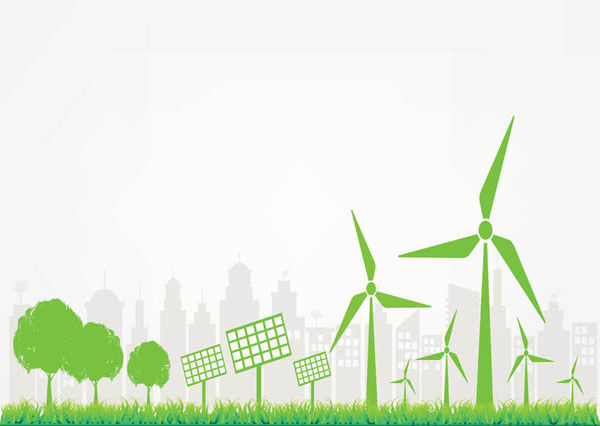Renewable energy sources (i.e., biomass, geothermal, hydropower, solar, wind) accounted for more than a fifth (20.1 percent) of net domestic electrical generation during the first six months of 2019, according to a SUN DAY Campaign analysis of just-released data from the U.S. Energy Information Administration (EIA). A year earlier, renewables’ share was 19.9 percent.
The latest issue of EIA’s “Electric Power Monthly” (with data through June 30, 2019) reveals that solar and wind both showed continued growth.
Solar, including small-scale solar photovoltaic (PV) systems, increased by 10.5 percent compared to the first half of 2018 and accounted for 2.7 percent of the nation’s total net generation. Small-scale solar (e.g., distributed rooftop systems) – which increased by 19.9 percent – provided nearly a third (32.7 percent) of total solar electrical generation.
U.S. wind-generated electricity increased by 0.9 percent and topped that provided by hydropower by 0.4 percent. Wind’s share was 7.8 percent of total electrical output vs. 7.7 percent from hydropower.
Combined, wind and solar accounted for 10.5 percent of U.S. electrical generation through the end of June. In addition, biomass provided 1.5 percent and geothermal contributed a bit more than 0.4 percent (reflecting 2.2 percent growth).
Moreover, during the six-month period, electricity from renewable energy sources ran neck-and-neck with that from nuclear power — 399,585 vs. 400,005 thousand megawatt-hours or 20.11 percent vs. 20.14 percent of total domestic electrical output.
In addition, during the first half of 2019, renewables further closed the gap with coal. A year ago, renewables provided 74.6 percent as much electricity as coal.
However, growth in renewable electrical output coupled with a 13.2 percent drop in that of coal has resulted in renewables generating 85.0 percent as much electricity as coal during the first six months of 2019.
—
The SUN DAY Campaign is a non-profit research and educational organization founded in 1992 to aggressively promote 100 percent reliance on sustainable energy technologies as cost-effective alternatives to nuclear power and fossil fuels and as a strategy for addressing climate change.












Comments